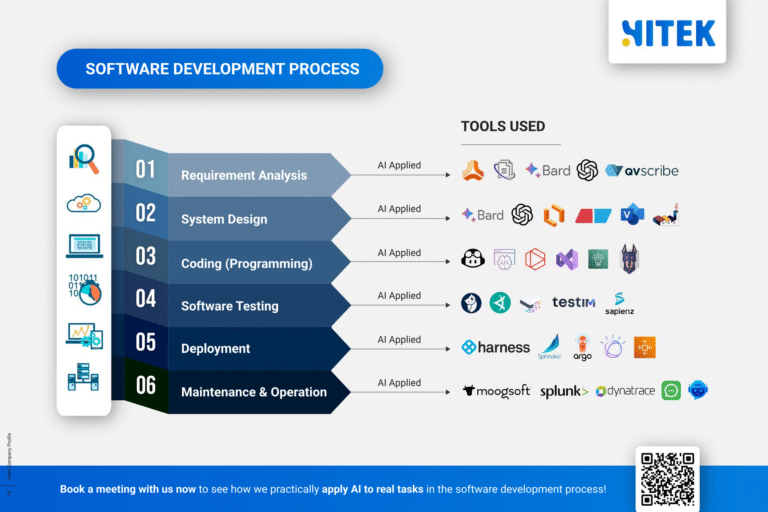Software development moves fast—especially in Australia’s thriving tech hubs like Sydney, Melbourne, and Brisbane. To keep up, teams rely on pipelines to streamline workflows, reduce errors, and accelerate delivery. But what exactly is a pipeline in software development, and why does it matter for your projects?
In this guide, we’ll explain the concept, explore different pipeline types, and explain how Australian developers and businesses can use them to improve efficiency.
Contents
ToggleUnderstanding the Software Development Pipeline
A software development pipeline is an automated sequence of steps that code goes through—from initial commit to final deployment. Think of it as an assembly line for software: each stage refines the product until it’s ready for release.
Pipelines are crucial for continuous integration and delivery (CI/CD), ensuring that updates are tested, built, and deployed smoothly. Without them, developers would manually handle repetitive tasks, increasing the risk of human error and slowing down releases.
Key Stages of a Typical Pipeline
While pipelines can vary, most follow a similar structure:
- Code Commit – Developers push changes to a shared repository (like GitHub or Bitbucket).
- Build – The system compiles code into executable files.
- Testing – Automated tests check for bugs, security flaws, and performance issues.
- Deployment – The approved version is released to staging or production environments.
- Monitoring – Post-deployment tools track performance and user feedback.
| Stage | Purpose | Standard Tools Used in Australia |
|---|---|---|
| Code Commit | Developers submit changes to version control. | Git, GitHub, Bitbucket |
| Build | Compiles code into a runnable application. | Jenkins, Docker, Gradle |
| Testing | Automated checks for bugs, security, and performance. | Selenium, JUnit, Cypress |
| Deployment | Releases the software to servers or cloud platforms. | AWS, Azure, Kubernetes |
| Monitoring | Tracks app health and user experience post-launch. | New Relic, Datadog, Splunk |
Why Pipelines Matter for Australian Developers
Australia’s tech industry is booming, with companies like Atlassian and Canva leading the charge. Local teams need efficient workflows that minimize delays and maximize quality to stay competitive.
1. Faster Releases Without Sacrificing Quality
Manual testing and deployment slow things down. A well-optimized pipeline automates these steps, allowing Australian startups and enterprises to push updates rapidly while maintaining stability.
2. Fewer Errors, More Reliability
Human mistakes in deployment can lead to costly downtime. Automated pipelines reduce risks by standardising the process—critical for industries like fintech and healthcare, where compliance is key.
3. Better Collaboration Across Teams
With remote work on the rise, Australian developers need seamless coordination. Pipelines ensure everyone works from the same codebase, with changes tracked and tested systematically.
Types of Pipelines in Software Development
Not all pipelines are the same. Depending on your project’s needs, you might use:
1. CI/CD Pipelines
The gold standard for modern DevOps, CI/CD pipelines automate testing and deployment. Companies like Culture Amp (Melbourne-based) use these to deliver updates multiple times daily.
2. Data Pipelines
These data pipelines move and process data efficiently in AI and big data projects. Sydney’s SafetyCulture relies on data pipelines to analyse workplace safety trends.
3. Feature Branch Pipelines
Ideal for agile teams, these tests individual features before merging them into the main codebase—reducing conflicts and bugs.
How to Set Up a Pipeline in Australia
Step 1: Choose the Right Tools
Popular CI/CD tools in Australia include:
- Jenkins (open-source, highly customizable)
- GitLab CI/CD (built into GitLab)
- CircleCI (cloud-based, easy setup)
Step 2: Automate Testing
Use frameworks like Jest (for JavaScript) or PyTest (for Python) to catch bugs early.
Step 3: Monitor Performance
Australian companies like REA Group use New Relic to track app performance post-launch.
Final Thoughts: Pipelines Keep Australia’s Tech Industry Moving
Whether you’re a Sydney startup or an enterprise in Perth, a well-structured pipeline is non-negotiable. It speeds up development, reduces errors, and keeps your team aligned—essential in a fast-moving industry.
Ready to optimise your workflow? Start by exploring AWS CodePipeline or GitHub Actions to automate your process today.
Got Questions?
If you’re an Australian developer or business looking to refine your pipeline strategy, comment below or contact local DevOps experts for tailored advice.









